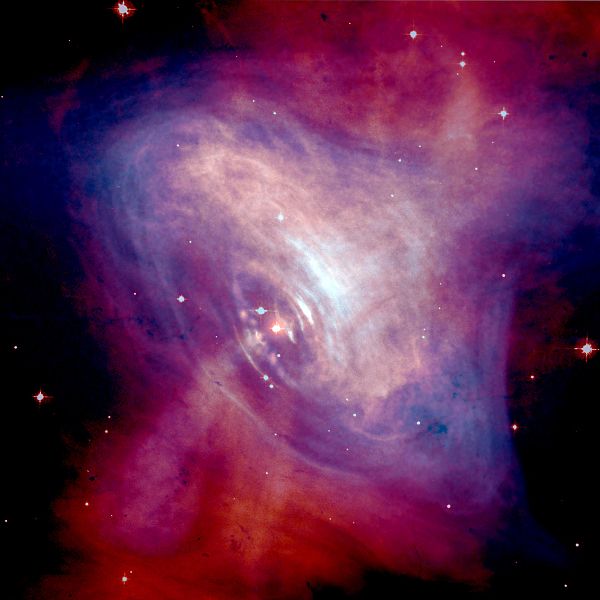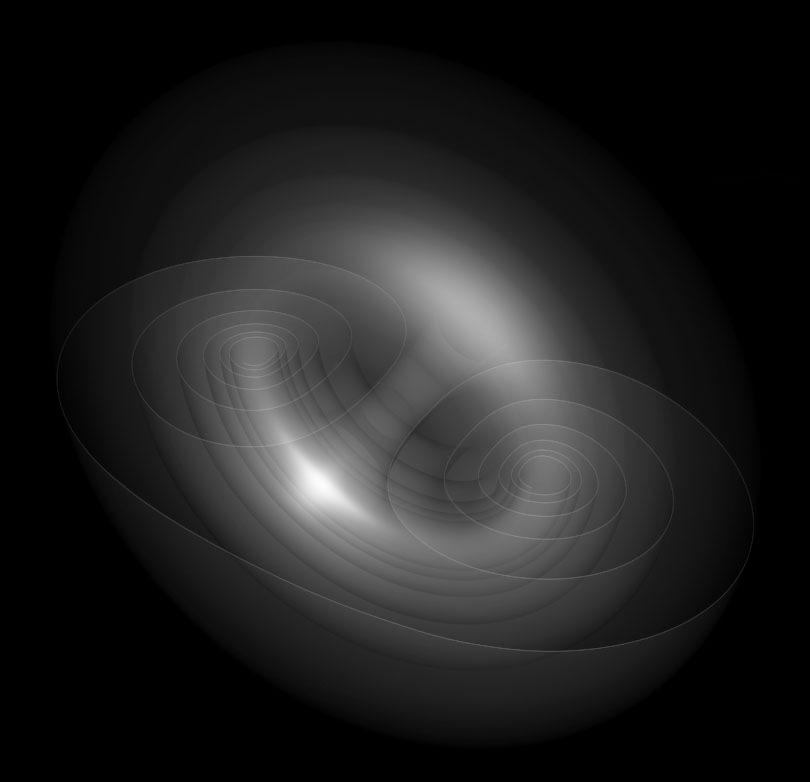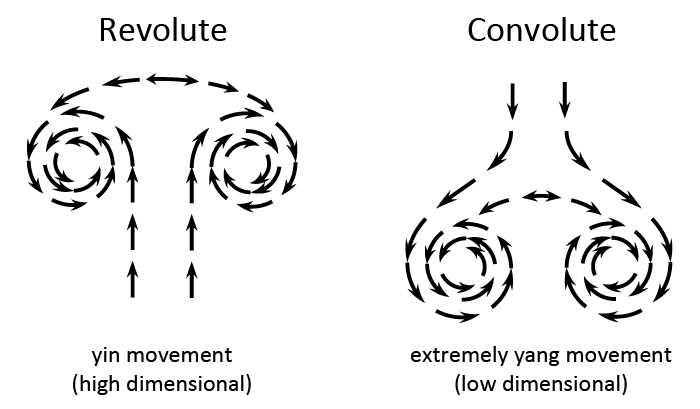Pulsars
A pulsar is an object in outer space which is said to be a rapidly rotating neutron star, which is the dead relic of a massive star, that emits regular pulses of radio waves and other electromagnetic radiation at intervals between pulses that range from roughly milliseconds to seconds for an individual pulsar.
When they are active, they spin with such great regularity that they're used as timers by astronomers. Pulsars are used by astronomers to search for gravitational waves, probe the interstellar medium, and to find extrasolar planets in orbit. Certain types of pulsars rival atomic clocks in their accuracy in keeping time.
The image below on the left shows the pulsar that is known as the Crab Nebula Pulsar. The image combines optical data from Hubble (in red) and X-ray images from Chandra X-ray Observatory (in blue).
 The Crab Nebula Pulsar. Image credit: Optical: NASA/HST/ASU/J. Hester et al. X-Ray: NASA/CXC/ASU/J. Hester et al. |
 Cross-section of a revolute |
The pulsar looks like a revolute vortex, and that is what the inner layers of the object are, but it connects to a convolute vortex and not to a pylon. A convolute is an s-type bridge that connects two revolutes that are both left turning or both right turning. The pulsar is an oscillating convolute vortex connected to a revolute. The revolute at the other end of the convolute is not visible because the state of equilibrium of the outer space medium is the revolute, the outer space medium already behaves like one big revolute (on a macrocyclic scale) for that reason a revolute can not be visible in outer space. Yet the revolute spiral windings that connect to the large end of the convolute are visible, although likely not in their normal form, because that spiral is oscillating.

The same type of bridge vortex, without the oscillation, can sometimes been seen with nuclear detonations (operation Upshot-Knothole Grable is one example), when the exact half of a cradle forms underneath the head of the mushroom cloud, but then the vortex movement becomes an s-bridge and forms a convolute instead of forming the remaining part of the cradle. The above image shows that same shape.
The oscillation of the medium could be the explanation for the pulses being emitted with a regular interval. This movement might, or might not include a rotation, for it is not known exactly how a revolute vortex oscillates. Problem with this theory, and the reason for why I have my doubts, is this motion video of the Crab Pulsar. This time-lapse movie was made from 7 still images of Chandra and Hubble observations between November 2000 and April 2001.
The video does not show a movement that resembles the movement of a revolute or a convolute. Instead, it appears from these 7 stills as if there are rings being emitted from the center of the vortex. It could be that the video disproves the theory of this object being a convolute, or the short video gives a false impression, or a convolute oscillates in a way that we are unfamiliar with. When a clock spring oscillates, it does not make the same movement as a disc spiral does, instead the movement is more perpendicular to the normal flow movement of the vortex. Something similar could be true for an oscillating convolute. We could be looking at a convolute that oscillates.
The pulsar emits a pulse at a rate of once every 33 milliseconds, or 30 times each second. And that is way too fast for an object that is that is 20 km wide. It should not be possible that the pulses come from the oscillation of a vortex that is that large. The pulses must come from a smaller source probably somewhere at the center of the cloud. So here again I have doubts about this extraterrestrial object and the cause for this phenomenon.
| All content on this site that is authored by Peter.A.Venis is licensed under the Creative Commons CC BY 4.0 license, unless otherwise mentioned. Most pages on this website also include material from other authors, under different licenses. Both the author's names and the licenses are mentioned in the file names whenever this information is known and can be provided. The presence of work from other authors on this website does not necessarily imply that those authors endorse the contents of this website. |
| A word that is often used on this website is the word 'vortex'. Many sources describe a vortex as a movement in a fluid that has a rotational flow. Yet many of the vortices that I describe on this website do not show a visible rotational flow. I took the liberty of using the word vortex for describing a phenomenon that had not been understood before, one that links together rotational and non-rotational movements. Even a movement in a straight line can in some cases be categorized as a vortex, if it is known that that movement is created by certain identical conditions. So keep in mind that the word 'vortex', within the context of the infinity-theory, has not the exact same meaning as other sources describe. |



